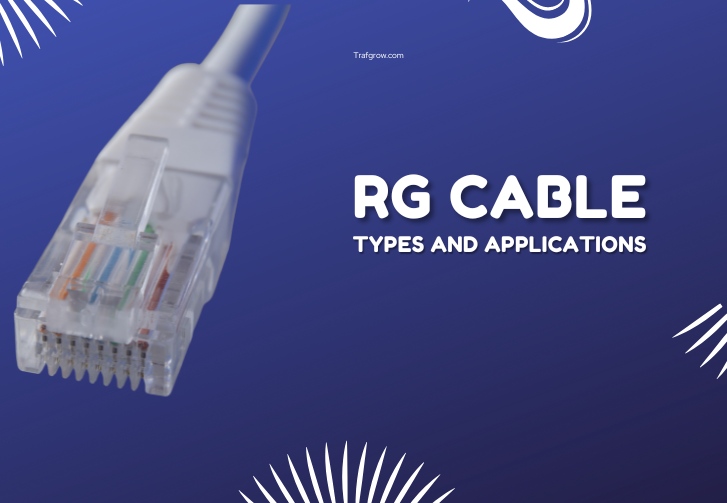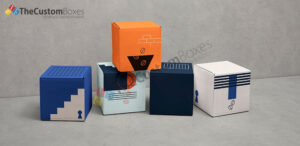
RG Cable: Types and Applications
RG cables, also known as RG coaxial cables, are widely used in various industries for their reliable signal transmission capabilities. In this article, we will provide an overview of RG cable, explore different types available, and discuss their applications in different fields.
RG cables, short for Radio Guide cables, are a type of coaxial cables commonly used for transmitting high-frequency signals. They consist of a central conductor, dielectric insulator, shielding, and an outer jacket. The central conductor carries the electrical signal, while the dielectric insulator provides insulation and minimizes signal loss. The shielding protects the signal from external interference, ensuring high-quality transmission. The outer jacket provides mechanical protection and durability.
RG Cable Types:
RG-58:
RG-58 is a popular type of RG cable widely used in applications such as computer networks, wireless communication, and amateur radio. It has a solid copper or copper-clad steel centre conductor and is known for its flexibility and low cost. RG-58 cables are suitable for short-range communication and have a frequency range of up to 1 GHz.
RG-6:
RG-6 is a commonly used RG cable type, known for its excellent signal quality and bandwidth capabilities. It is widely used in applications like cable television (CATV), satellite TV installations, and high-speed internet connections. RG-6 cables have a thicker conductor compared to RG-58, allowing for better signal transmission over longer distances. They are capable of handling frequencies up to 3 GHz and are suitable for high-definition (HD) and standard-definition (SD) broadcasts.
RG-11:
RG-11 is a heavy-duty RG cable designed for applications requiring long-distance signal transmission. It has a larger diameter and a thicker conductor compared to RG-6, allowing for minimal signal loss over extended distances. RG-11 cables are commonly used in applications such as cable television distribution networks, long-range video surveillance systems, and professional audio installations.
RG Cable Specification:
RG cables come in various types, each with specific specifications. Some common specifications include:
Impedance:
RG cables typically have an impedance of 50 or 75 ohms. The impedance determines the resistance to the flow of electrical signals and plays a crucial role in ensuring proper signal transmission.
Read also: GPU Cloud Servers: Empowering Next-Level Computing
Signal Loss:
RG cables have different levels of signal loss, measured in decibels per meter (dB/m) or decibels per 100 feet (dB/100 ft). Lower signal loss indicates better performance and higher signal quality over longer distances.
Frequency Range:
The frequency range specifies the range of frequencies that a particular RG cable can handle without significant signal degradation. Different types of RG cables have varying frequency ranges, catering to different applications.
RG Cable Construction:
RG cables are constructed using multiple layers to ensure proper signal transmission and protection against external interference. The typical construction of an RG cable includes:
Central Conductor:
The central conductor is a solid or stranded wire that carries the electrical signal. It is surrounded by a dielectric insulator.
Dielectric Insulator:
The dielectric insulator surrounds the central conductor and provides electrical insulation. It minimizes signal loss and prevents interference between the conductor and the shield.
Shielding:
RG cables have a shielding layer made of metallic materials like aluminum or copper. The shielding protects the signal from external electromagnetic interference (EMI) and radio frequency interference (RFI). Common types of shielding include foil, braid, or a combination of both.
Outer Jacket:
The outer jacket surrounds the shielding and provides mechanical protection to the cable. It is typically made of PVC (Polyvinyl Chloride) or other materials resistant to abrasion, moisture, and environmental factors.
RG Cable Applications:
Telecommunications:
RG cables find extensive use in the telecommunications industry for various applications. They are used in transmitting signals for cable television distribution, satellite TV, broadband internet, and cellular networks. The reliable signal transmission capabilities of RG cables make them suitable for delivering high-quality audio and video content to end-users.
Data Networking:
RG cables are also employed in data networking applications. They are used for Ethernet connections, local area networks (LANs), and interconnecting network devices such as routers, switches, and modems. RG cables ensure stable and high-speed data transfer, making them crucial for reliable network connectivity.
Security Systems:
RG cables are commonly used in security systems, including closed-circuit television (CCTV) installations and video surveillance. They enable the transmission of high-resolution video signals from cameras to monitoring stations or recording devices. The durability and superior signal quality of RG cables contribute to effective and reliable security monitoring.
Amateur Radio:
Amateur radio enthusiasts often use RG cables for their radio communication setups. They are used for connecting antennas, transceivers, and other radio equipment. RG cables provide efficient signal transmission, helping amateur radio operators establish reliable communication over long distances.
Conclusion:
RG cables are versatile and widely used in various industries for their reliable signal transmission capabilities. With different types available, including RG-58, RG-6, and RG-11, these cables find applications in telecommunications, data networking, security systems, and amateur radio setups. Understanding the different types of RG cables and their applications can help professionals and enthusiasts make informed decisions when selecting the appropriate cable for their specific requirements.








